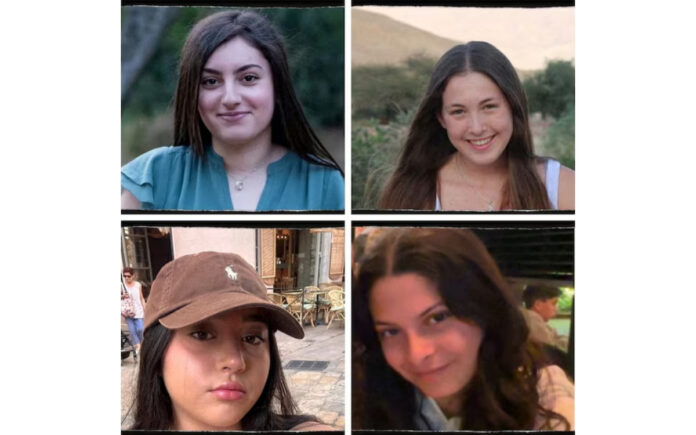Jerusalem: Palestinian militant group Hamas announced on Friday the names of four Israeli female soldiers to be released as part of the second prisoner swap under the ongoing ceasefire agreement in Gaza. The individuals named are Karina Ariev, Daniela Gilboa, Naama Levy, and Liri Albag, all members of a military surveillance unit stationed near Gaza during Hamas’ attack on October 7, 2023. Hamas stated the release would occur on Saturday.
This follows the first exchange on Sunday, which saw three Israeli women and 90 Palestinian prisoners released. Israeli Prime Minister Benjamin Netanyahu’s office confirmed receiving the list from mediators but withheld the names, noting that Israel’s formal response would follow.
Israeli media reported discrepancies between the announced list and the original agreement, with a civilian, Arbel Yehoud, expected but absent from the list. Despite this, preparations for the exchange are underway, with Israel’s health ministry preparing hospitals to receive the hostages.
WARNING: GRAPHIC CONTENT
— Reuters (@Reuters) January 25, 2025
Hamas released the names of four Israeli female soldiers held as hostages who are set to be released under the ceasefire deal in Gaza. Israel has agreed to release 50 Palestinian prisoners for every female soldier released https://t.co/ttFP5d1RYX pic.twitter.com/F92DD9Fiww
Details of the Prisoner Exchange
Under the ceasefire agreement, Israel will release 50 Palestinian prisoners for every female soldier freed, suggesting 200 Palestinian detainees will be exchanged for the four Israeli hostages. The Palestinian Prisoners Club indicated that the Red Cross has been instructed to assist with the process at Ofer prison in the West Bank on Saturday. Some detainees will be released in the West Bank, while others are likely to face deportation.
Also Read | Trump’s Tariff Threats Spark Viral Movement with ‘Canada is Not for Sale’ Hats
The Hamas prisoners’ media office stated it expects the list to include 120 prisoners serving life sentences and 80 serving other long terms. The ceasefire deal’s broader framework involves a phased approach, with future negotiations aimed at securing the release of remaining hostages and an eventual withdrawal of Israeli forces from Gaza.
Emotional Responses and Tensions
The phased release has elicited mixed reactions in Israel. While the return of hostages has been met with relief, protests have emerged from families and individuals concerned about the fate of male hostages of military age, whose release is not guaranteed in the initial phases. Some government members and hardliners have criticized the agreement, arguing it provides Hamas with an opportunity to regroup.
Finance Minister Bezalel Smotrich has called for an immediate resumption of military operations once the first phase concludes. Meanwhile, Hamas has maintained a visible presence in Gaza, with its police resuming activities during the ceasefire.
Also Read | New York Proposal: Use Paid Sick Leave to Care for Pets
Background on the Conflict
The conflict intensified after Hamas’ attack on October 7, 2023, which left 1,200 Israelis dead and over 250 hostages taken to Gaza, according to Israeli figures. Israel responded with extensive airstrikes and military operations, which Gaza health authorities report have resulted in over 47,000 Palestinian deaths. The current ceasefire, mediated by Qatar and Egypt with U.S. backing, is the first since a brief truce in November 2023.



